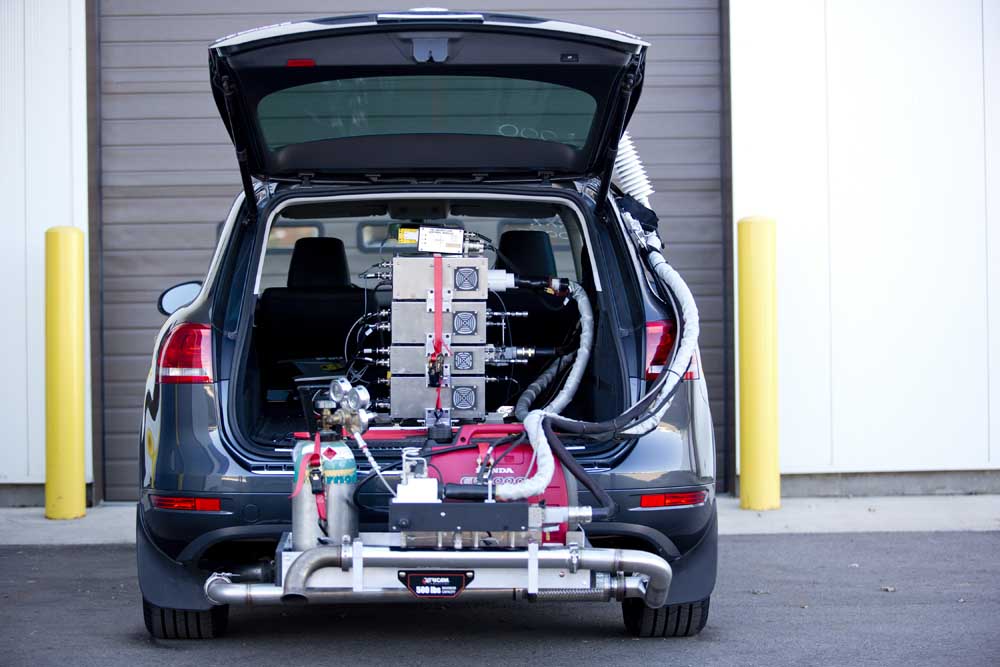Emissions testing hits the roads
Published 12:00 am Monday, November 9, 2015

- Laura McDermott / The New York TimesA 2014 Volkswagen Touareg TDI, a diesel model, is equipped with a portable emissions-testing system by the EPA’s National Vehicle & Fuel Emissions Laboratory in Ann Arbor, Michigan, this month.
Concerned that cheating on vehicle emissions could be prevalent across the automobile industry, regulators in the U.S. and Canada are significantly expanding their on-the-road emissions tests to cover all makes and models of diesel cars.
The tests, which come in the wake of Volkswagen’s admission that it installed software on more than 11 million cars to evade standards, are being conducted randomly and in real-world conditions, rather than in traditional lab settings.
“We are very anxious to find out if there are any other programs out there,” said Christopher Grundler, director of the office of transportation and air quality at the Environmental Protection Agency.
The first tests on brands manufactured by Volkswagen, completed last week, found the cheating software on about 10,000 VW, Audi and Porsche models not previously disclosed by the German manufacturer. Volkswagen disputes the EPA’s claim, saying the software was not intended to thwart emissions testing.
Since then, no other automobile company has been found to have installed so-called defeat software, although it will take several weeks for all makes and models to be tested.
Grundler declined to describe the tests, except to say they will focus on 2015 and 2016 model year diesel cars. They will also be performed on all new cars that manufacturers seek to certify, he said.
The move by the EPA is a significant expansion of its testing regimen, which previously did road testing for pollutants mainly on large trucks. It also makes road-test spot checks of older cars to ensure their pollution-control mechanisms are still effective. Tests are also being performed alongside regulators in Canada and California.
But Volkswagen’s scandal has highlighted deficiencies in the existing lab tests both in North America and Europe.
“Regulators must think more like the cheaters,” said Luke Tonachel, an auto-emissions specialist at the Natural Resources Defense Council. “EPA is starting to use new tests that can’t be readily gamed by manufacturers.”
An official with the trade group Alliance of Automobile Manufacturers said it supports the EPA expansion of road testing.
Europe has been planning its own real-world testing for several years, although those tests will not start until 2017. Other countries, including South Korea, China, India and Mexico, have announced or are also considering road tests.
The new and more unpredictable testing represents a sea change from the traditional, highly controlled lab setting where vehicles are put on a treadmill, wired up with sensors and run through a standardized and familiar routine.
“Manufacturers have asked us what the test conditions would be, and we’ve told them that they don’t have a need to know,” Grundler said. “It will be random.”
The road-testing regimen could dim the future for diesels, which have higher pollution emissions, making electric and hybrid vehicles more attractive in terms of their environmental impact.
U.S. regulators believe road testing is relatively crude and cannot match the precision of lab results at detecting nitrogen oxide and other fine particles and pollutants. Rather, the aim of their road tests is to help validate lab findings by catching cars whose road performance reveals higher emission readings.
The European plan, under development since 2011, still faces what could be a contentious fight in the European Parliament, amid criticism that policymakers have watered down earlier proposals.
The auto industry has publicly embraced the coming European tests, while lobbying to make them less demanding.
At a hearing last month, a member of the British Parliament asked Mike Hawes, the chief executive of the leading auto-industry trade group in Britain, how the industry could restore consumer confidence.
“The fix for this will be the introduction of so-called real-world driving emissions,” Hawes said.






